Daypacks usually fall into one of two categories: ones designed for hiking or outdoor-focused travel, and ones intended for commutes, carrying a laptop, or everyday carry.
What’s interesting about the Camelbak ATP 20 is that it covers both uses well, making it a daypack suitable for any situation.
Its rain resistance, comfortable back panel, and compatibility with Camelbak water reservoirs make it an ideal companion on an adventure trip. Then again, the organizational features and removable laptop sleeve make it equally suited to use closer to home, on less adventurous trips, or when working remotely.
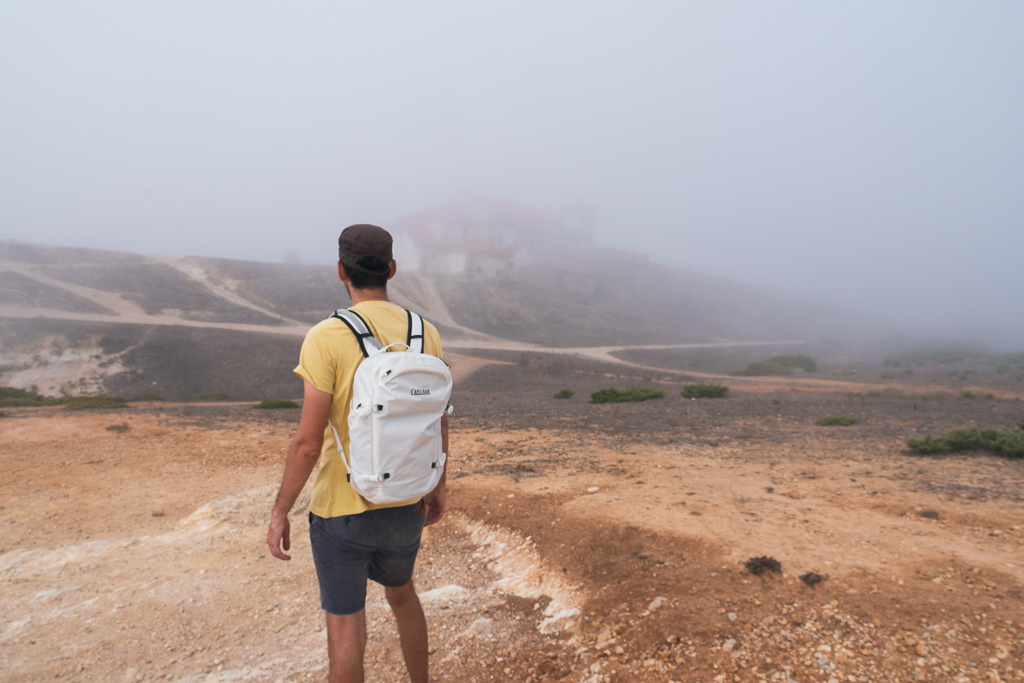
The Camelbak ATP 20 is a daypack perfectly made for the kind of adventure travel I enjoy, but to my surprise, I’ve also been using it as my day-to-day backpack when I’m working remotely from cafes and co-working offices.
Apart from a few nitpicks, I’ve found it to be an excellent daypack that perfectly straddles the line between outdoor and tech/EDC.
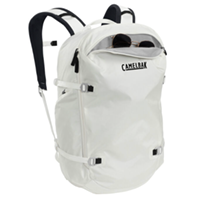
Price $160
Pros
- Perfectly suited to adventure travel and hiking
- Well-padded back panel is comfortable for extended use
- Removable laptop sleeve also makes it fairly suitable for everyday carry or digital nomads
- Travel organizer is well-placed on the side
Cons
- Sternup strap can be somewhat fiddly to attach
Combining it with a main pack
The first thing I want to know about any daypack is how it will work within my overall packing system.
I always travel with two packs: one that’s a larger carry-on size and intended for storing my clothes, shoes, and other larger travel items — plus a daypack that I can wear while sightseeing or on hikes. (On flights, the daypack goes underneath the seat in front of me as my personal item.)
While this means carrying two packs at once from time to time, I love the versatility of having the best pack for each task.
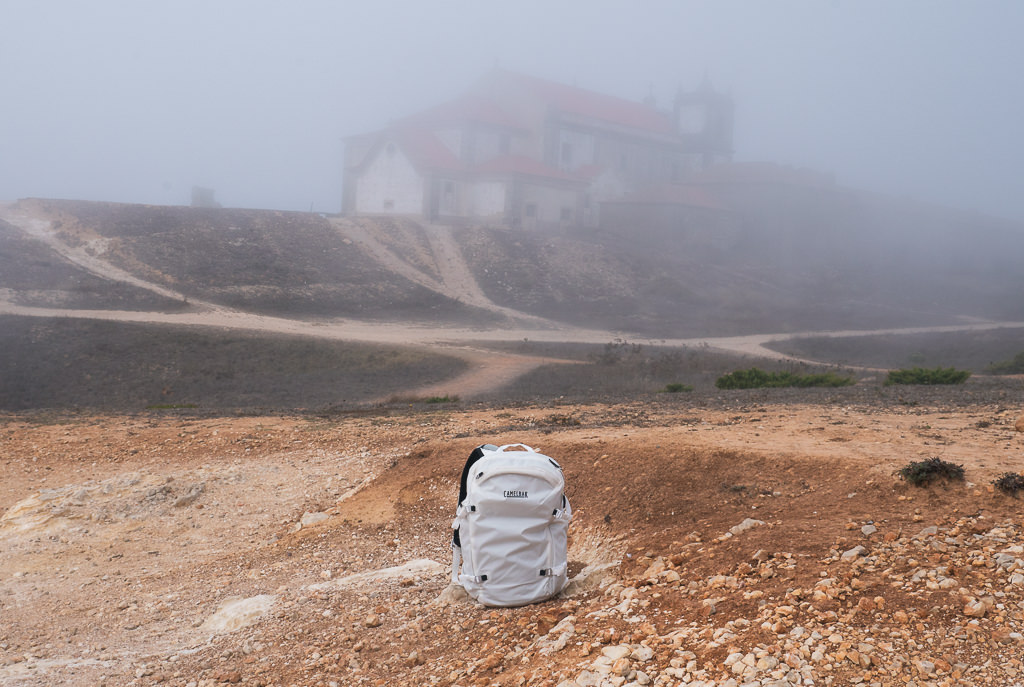
The Camelbak ATP 20 fulfils the support role very well. Having a capacity of 20 liters, it’s big enough to fit my large water bottle, snacks, DSLR camera, reading material, rain jacket, and other everyday travel essentials. My clothing and other bulkier travel items will go in my back backpack, which is currently an Osprey Farpoint 40.
When I’m transiting or navigating my way through an airport, I’ll carry the daypack by hand. I do wish the Camelbak ATP 20 had a more fully padded carry handle on top for this purpose, though carrying it by grabbing the shoulder straps or the hanger works alright.
The Camelbak ATP 20 also has a pass-through sleeve, meaning you can easily stack it on top of a rolling suitcase if needed. If you typically travel with rolling luggage but need an extra pack to go with it, the Camelbak will work seamlessly with any suitcase.
Stand-alone use
Apart from taking the ATP on my travels, I’ve also used it as a stand-alone daypack during my regular working week. I typically work from cafes and coworking offices in my home city, for which this pack is quite well-suited.
Despite its sporty and outdoorsy look, the ATP does have organizational features and a laptop sleeve that make it very usable as a tech bag or daily carry. This may not be what it’s primarily designed for (ATP stands for Adventure Travel Pack), but I really like that it still covers this type of use.
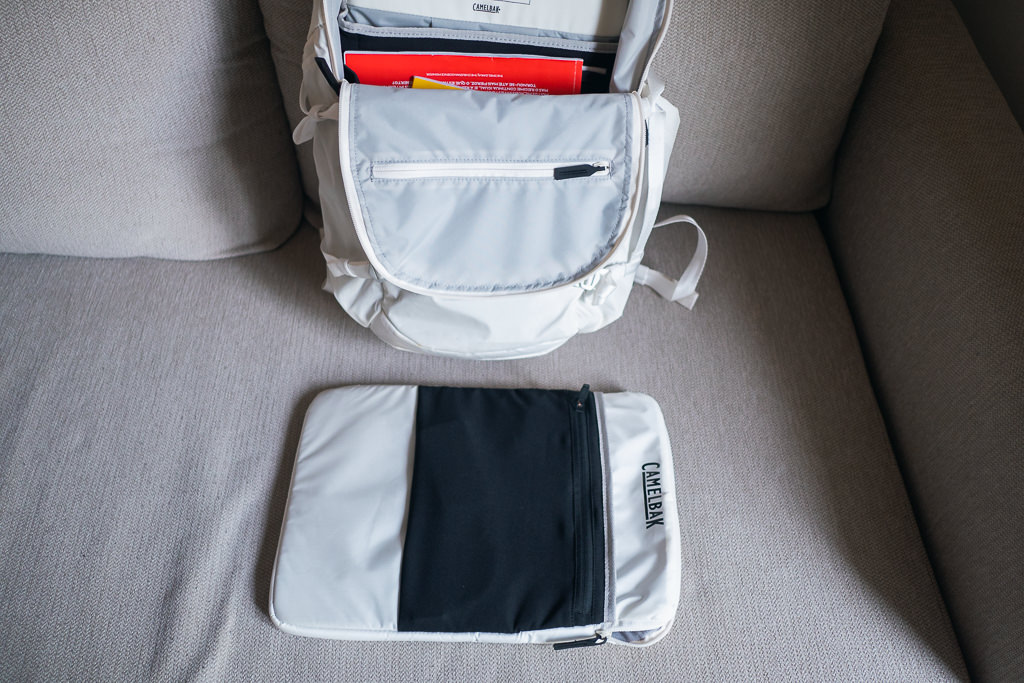
Even when I pack it full with my 13” MacBook Air with a protective case, a large power bank weighing about 1kg, over-ear headphones, a notepad, various electronic accessories, and some reading material, it remains comfortable to wear thanks to the padded back and well-designed straps.
I have in the past tried to use other outdoors-oriented daypacks (such as the Osprey Daylite) for daily carry, but I’ve found them often not so suitable for carrying a heavier load or for carrying a laptop. However, the Camelbak functions quite well for this purpose.
Comfort and straps
The back panel comprises several foam elements that are about 1.3cm or half an inch thick at the lower base. This is a really nice level of padding that makes it comfortable to carry even with a fairly heavy load.
When I loaded it up with about 5kg or 11 pounds of contents, it still felt perfectly fine.
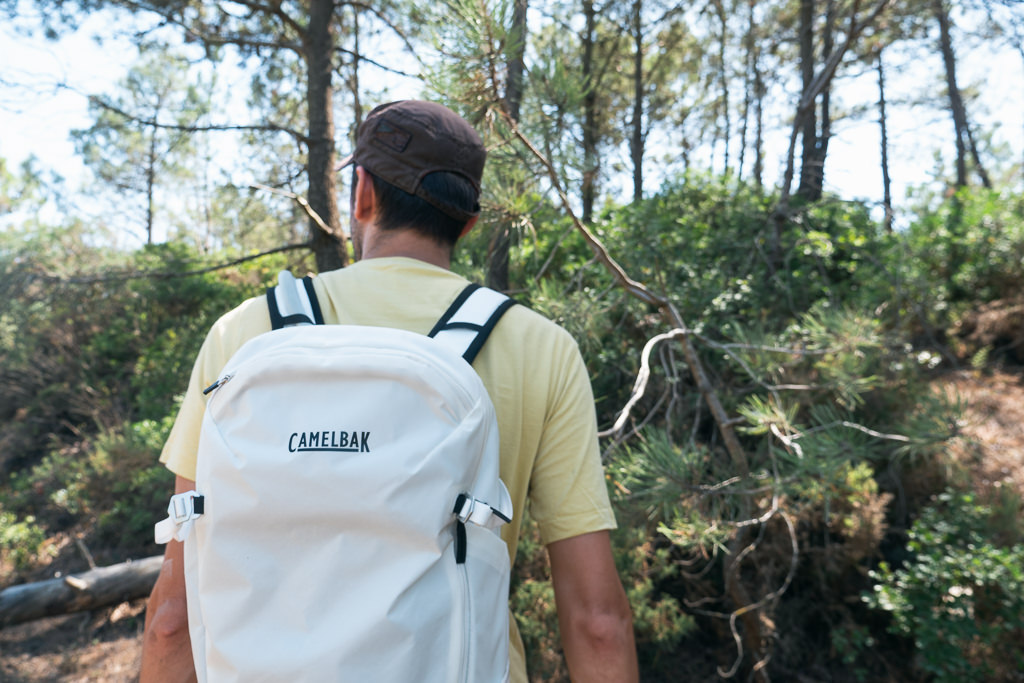
The shoulder straps are decently padded for a pack of this size and come with a sternum strap, which is always an extremely important feature for load balancing. The sternum strap is adjustable to 6 different settings with elements that can be detached on both sides.
This removable sternum strap works a bit similarly to, say, the Peak Design packs, though I like Camelbak’s implementation here a bit better. Whereas the Peak Design attaches the sternum strap with a hook that can too easily detach unintentionally, here it’s kept in place with essentially a ‘plug’.
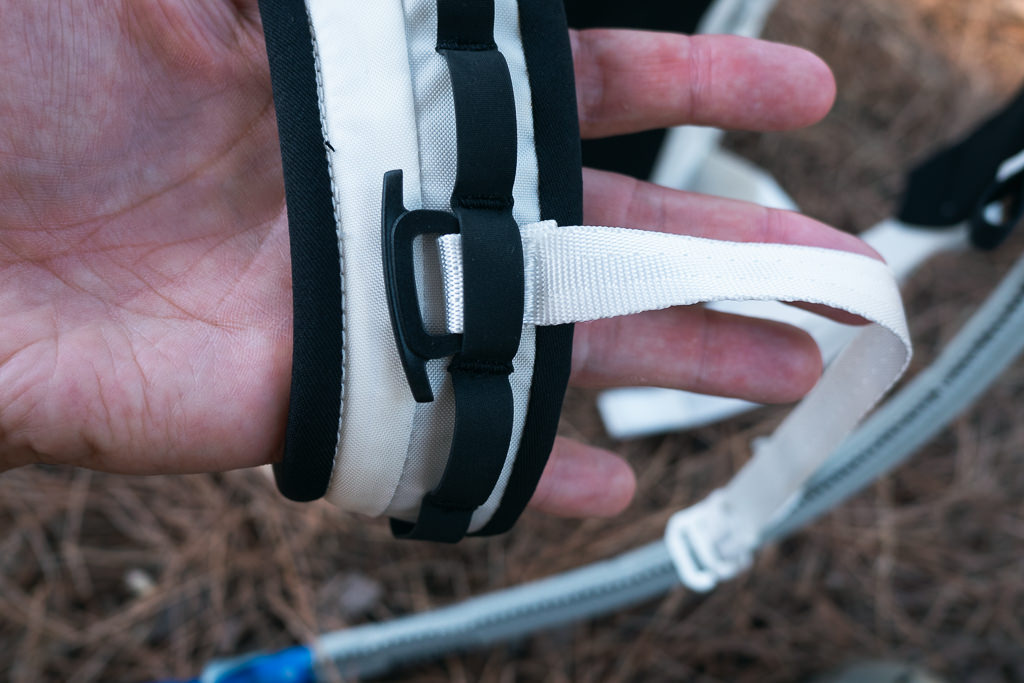
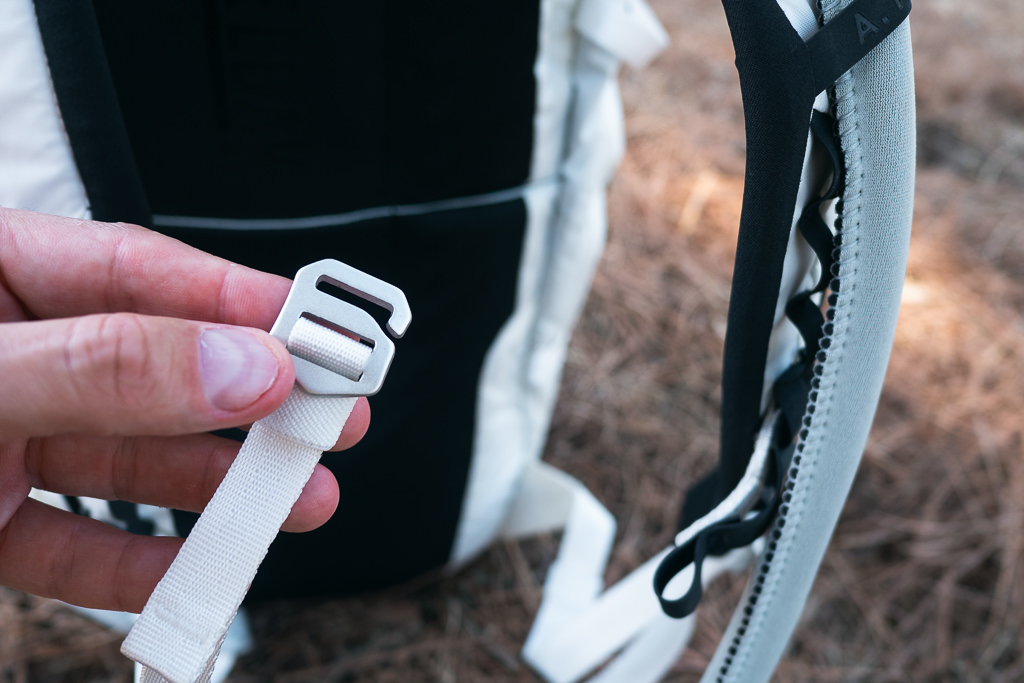
The sternum strap is closed with a little hook through a loop. This is a bit of a nitpick, but I do generally prefer clips here instead, as they let you close the strap without even having to look. A hook is a bit nicer aesthetically, but it can also be a bit more fiddly.
It’s sometimes taken me a minute or so to detach the sternum strap, but maybe I just still need to get the hang of it.
There is no hip belt or hip strap, though arguably a pack of this side doesn’t strictly need this, so it’s just two fewer straps that may otherwise be dangling around.
Bottle holder & water reservoir
The Camelbak brand originally rose to fame with its water bladders and the ATP 20 is fully compatible with any up to 3 liters. You’ll find a small water droplet icon on the back, behind which is a space where you can attach a water bladder.
This is excellent not just for hiking or outdoor activities, but also for tropical or summer trips. When you’re sweating your face off while, say, sightseeing in Bangkok, it’s nice to be able to hydrate at any time.
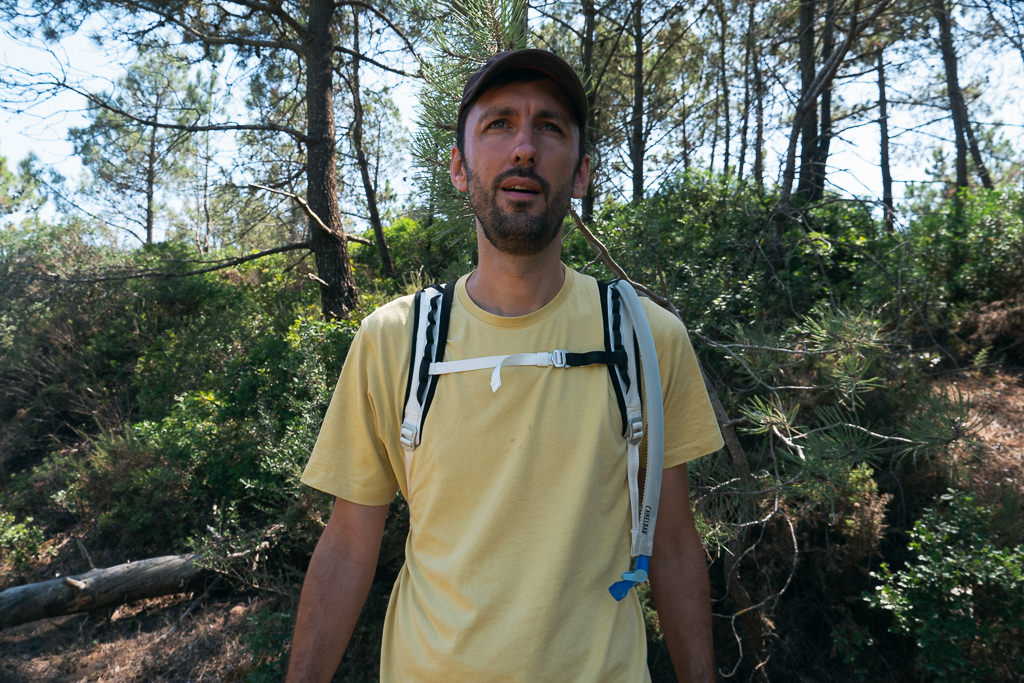
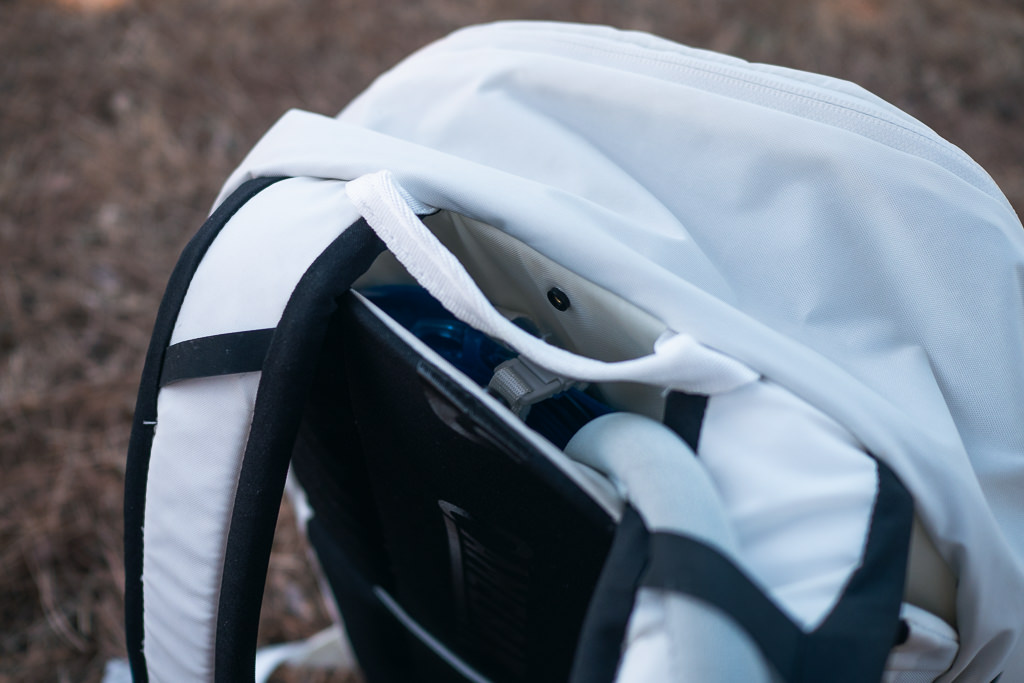
A water reservoir is not included so you’ll have to buy one separately, but any version up to 3 liters will work with the ATP. You can check out some of the compatible reservoirs here.
Of course, there is also a side pocket where you can simply store a water bottle. This pocket may appear small in images but it’s actually very spacious thanks to a stretchy material. You can definitely fit a bottle about up to 40oz or 1 liter in capacity, though this will be pretty tight. A 500ml or 750ml (25 oz) bottle will be more suitable.
This side pocket can be equally used for storing a tripod, for instance. There are two compression straps on each side that can help you fasten whatever it is you want to keep in these side pockets.
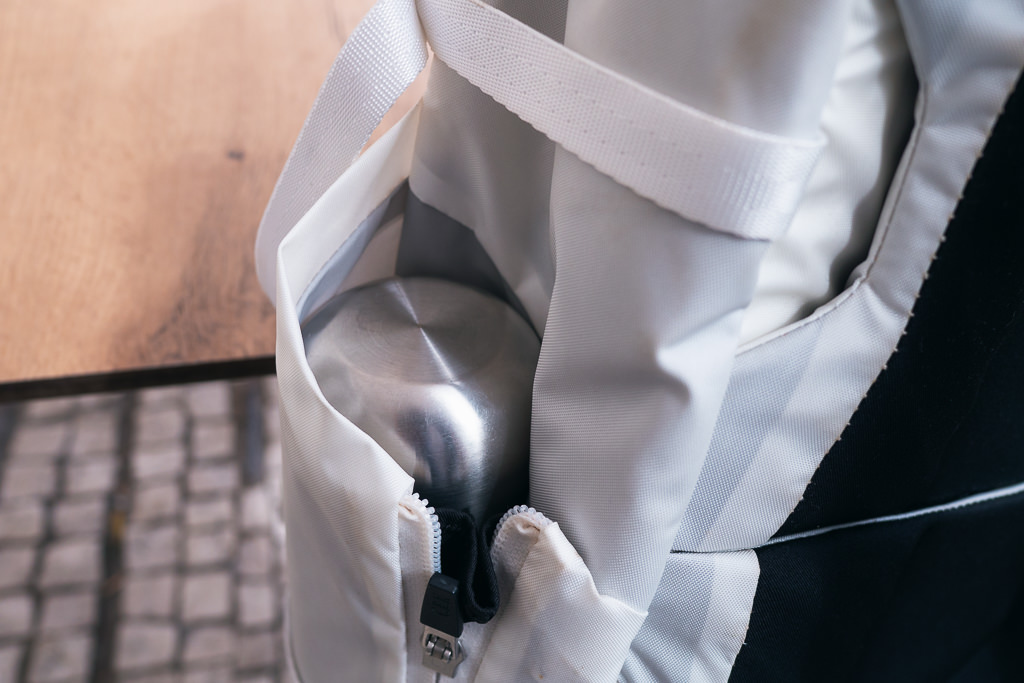
The side pocket
Speaking of which, the feature that I might just appreciate the most is the travel organizer that’s positioned on the side. It’s so much more intuitive to place it here that I wonder why not all backpacks do so!
The travel organizer is where you can keep pens, keys, phone, or other small items. It’s typically positioned in the front of backpacks, often with a very deep sleeve that covers the full height and width. I find these highly impractical as small items can end up all the way at the bottom where they are hard to find, and these compartments are often simply too big for their intended purpose. Putting a small travel organizer on the side is a very clever move that I haven’t seen before.
It’s also a lot better than having two water bottle pockets on both sides of a pack. I never understand why anyone would need two stretchy side pockets, so having one side dedicated to the travel organizer makes perfect sense.
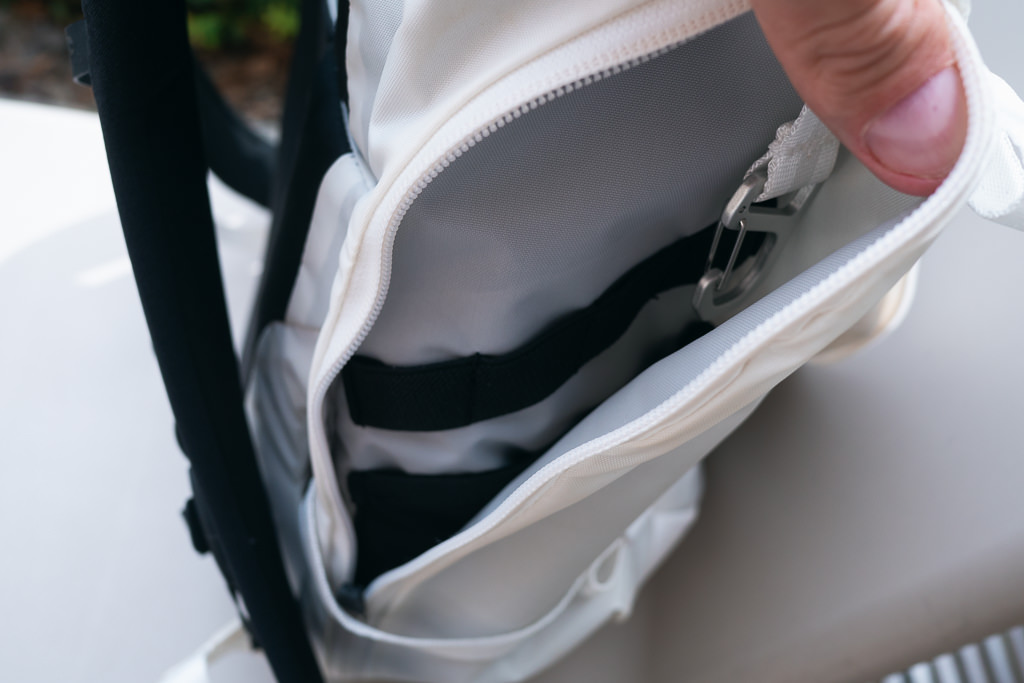
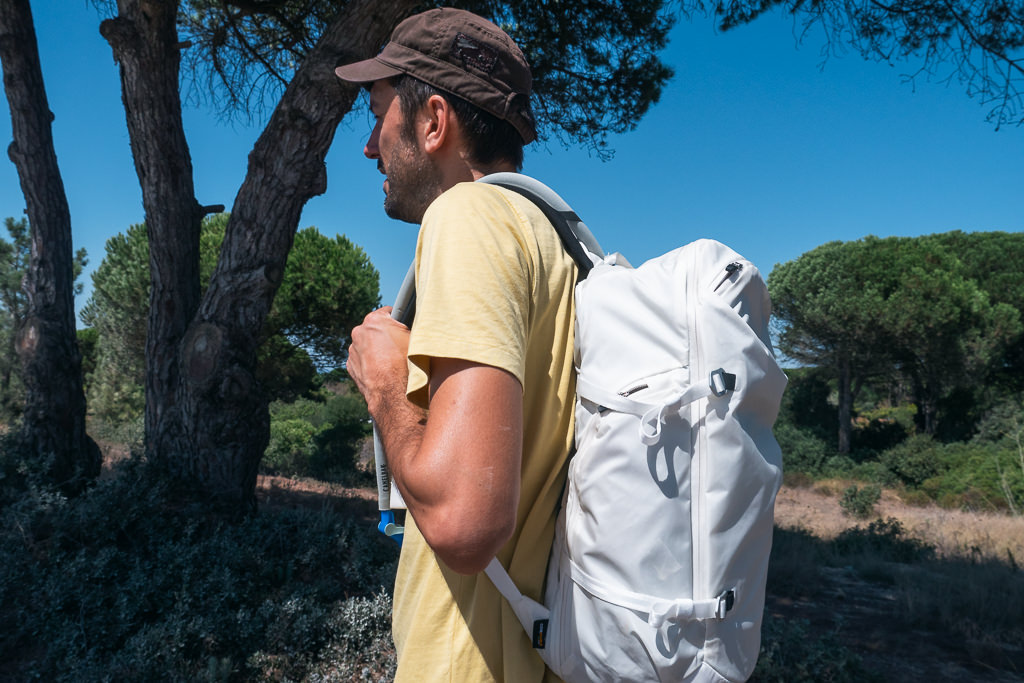
Removable laptop sleeve
Finally, there is a laptop sleeve that is fully removable. It’s nicely padded and lined with a soft velvety material. I normally keep a plastic protective case around my Macbook Air, but with the ATP I can just take it off, as this laptop sleeve will keep it perfectly safe.
According to Camelbak, it fits most laptops of 15” and under. I’ve tested it with my 13” Macbook Air, a 13” Acer Chromebook with a pretty thick bezel, and my old Dell XPS 13” and all fit rather well.
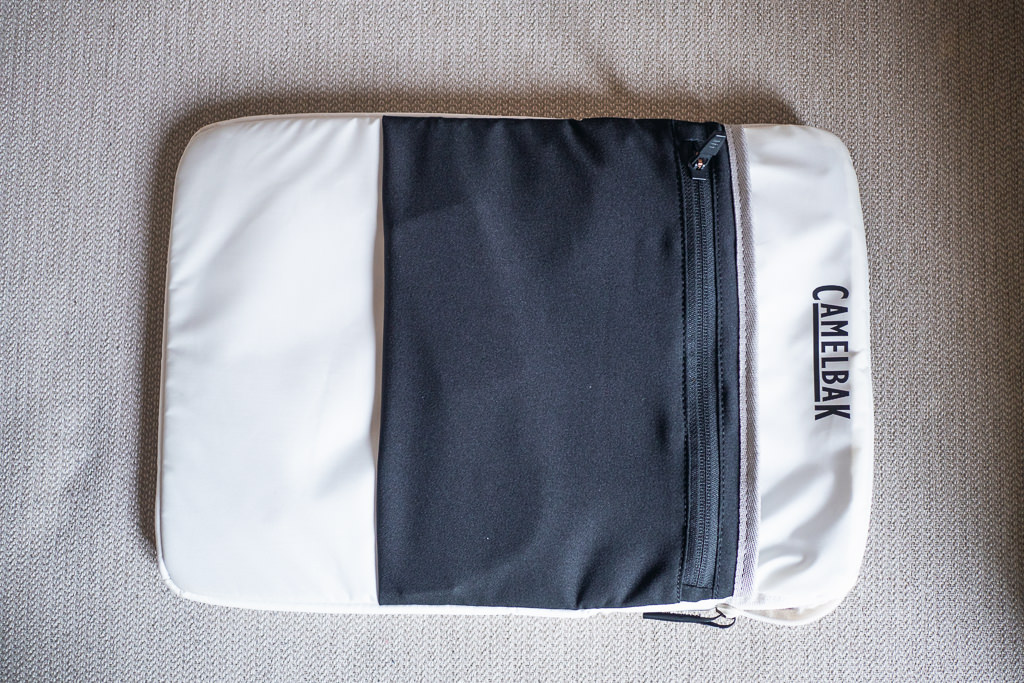
If you have a 15” laptop I would still check the measurements as it may be a little snug. I’ve measured the dimensions as 24 cm / 9.5 inches by 34cm / 13.4 inches (with just a bit of margin around it). Do keep in mind that laptop screen sizes measure the diagonal length, which on the ATP laptop sleeve is about 44 cm or 15.7 inches. If your 15″ laptop screen happens to have a very thick bezel, that may put it over the maximum.
The laptop sleeve also has another zipped sleeve on the front, with space for three pens and a small stretchy pocket. It’s nice to be able to keep your essential computer accessories bundled with your laptop.
I love that the sleeve is removable. While I almost always carry a laptop in my everyday use, I usually don’t bring my laptop on any trips abroad, as I prefer to stay offline during my leisure trips. It’s great to be able to remove an extraneous feature and free some space when using it in hiking/travel pack mode.
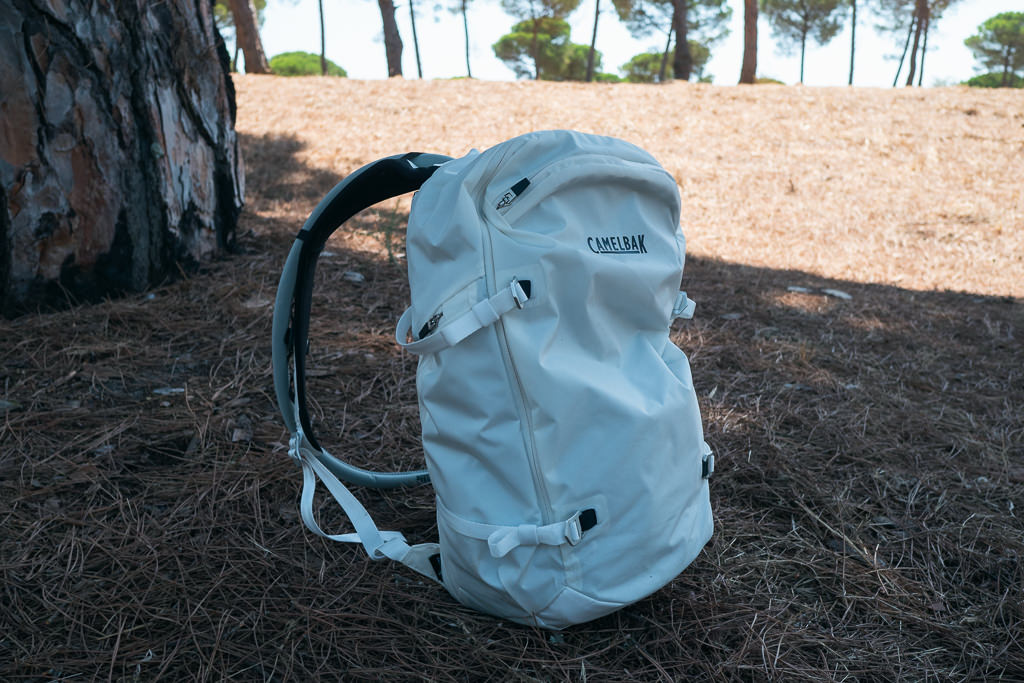
Final thoughts
All in all, this is a great daypack that looks great and is a joy to use. It uses recycled materials throughout, including a high-quality Cordura for the outer shell, which makes this a highly sustainable product to boot.
There are two color editions: white and black. The white edition that I went with is actually a little bit off-white due to being made of undyed recycled material. I prefer this color, but if you’re planning some particularly wild trips, then you may wish to consider the black edition as it may not stain as visibly.
Really my only gripe is that I wish the sternum strap were a clip, not a hook, for easier attaching and detaching. Other than that, this is a very nice bit of gear, and a worthy investment given that you can buy it not only for your adventure trips, but use it in more general travel- and daily carry scenarios as well.
I should mention that there are two sizes: the 20L version reviewed here, as well as the Camelbak ATP 26. The larger version obviously has a bit more packing space, though its design is also a bit different, having an expandable top-loading main compartment.
You can buy the ATP at Camelbak’s website.
Some links may be affiliate links, meaning I may earn commission from products or services I recommend. For more, see site policies.
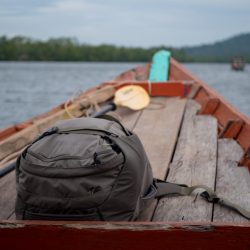




0 comments
Leave a comment
Your email address will not be published. Comments are manually moderated.